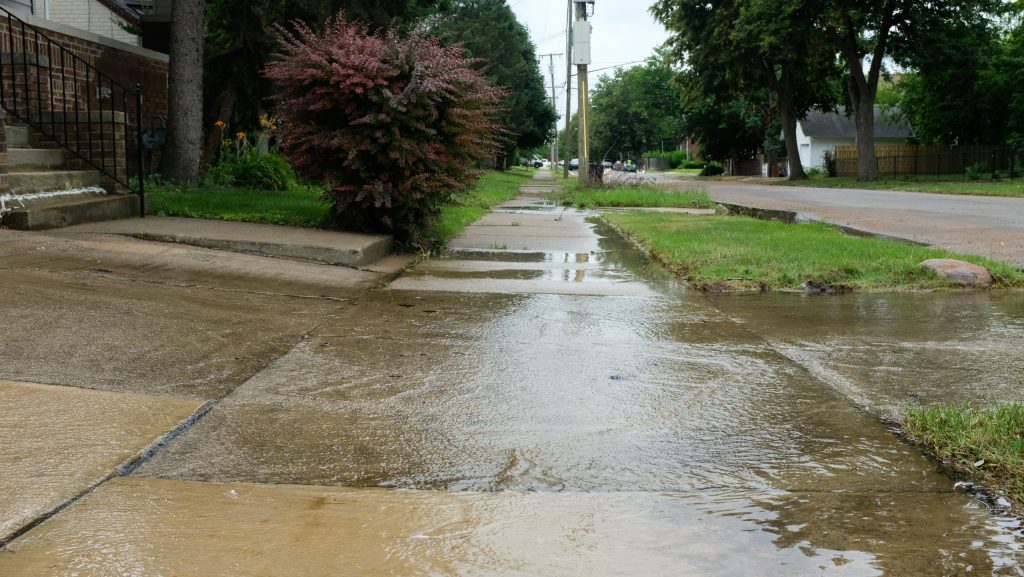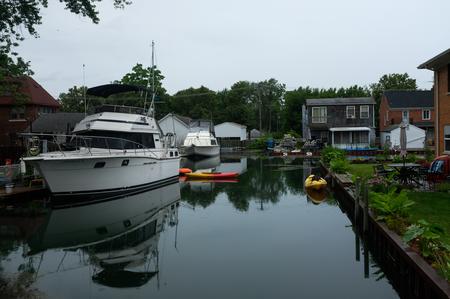Springtime Showers Bring Increased Flooding to Detroit
Spring precipitation is causing flooding in places like Jefferson Chalmers. A local environmental newsletter is looking at efforts to address the water levels in Detroit.

Flooding in Detroit's Jefferson Chalmers neighborhood, July 2019.
There’s been a lot of precipitation throughout metro Detroit over the last couple of months.
It’s an issue contributing to rising water levels in the Great Lakes and affecting infrastructure projects and residential properties in and around Detroit, affecting the lives of residents amid the coronavirus pandemic.
“We know that the Great Lakes water levels broke records for 2019,” says Planet Detroit Editor Nina Ignaczak. She adds that climate forecasters are saying levels will be even higher in 2020 than they were last year.
Belle Isle Under Water
One place you can observe the impact of high water levels first-hand is Belle Isle State Park in Detroit. “In April of 2019, [state park engineers and other officials] did a project that connected Lake Okanoka to the Detroit river and because water levels were so high it led to flooding… which has persisted for the last year,” explains Ignaczak.
On the issue of flooded roads and trails, she says “[Planet Detroit] talked to managers at Belle Isle and they are trying to plan for uncertain water levels given that we know that water levels are going to be inconsistent from here on out.” Some of the potential solutions to these flooding issues on the island include constructing easily removable dams and building out more capacity for flood plains during events of high precipitation.

Flooding Persists in Hard-Hit Jefferson Chalmers
Taking a look at a residential area not too far from Belle Isle, Ignaczak explains that her publication has been reporting on Jefferson Chalmers flooding for the last year. “There was flooding there last summer that persisted for months with water over the road and over the canals flowing into storm drains,” says Ignaczak. As that flooding ramps up again this year, the city is implementing a system of tiger dams, inflatable dams that are installed along the canals on people’s property. Ignaczak, explains that the inflatable dams are a kind of stop-gap measure — and an expensive one at that — to try to keep water out of residential property until it can be addressed more systemically. “It’s complicated because every property owns their own seawall and there needs to be a system of contiguous seawalls that will address the rising waters,” says Ignaczak.
Ignaczak says she talked to “a couple of residents and they’re not super happy with the level of communication coming from the city, but there have been people working on their properties installing these tiger dams.”
Contaminants in the Detroit River?
Yet another water-related issue is the Revere Dock in Detroit, the site of a contentious dock collapse which caused many people to worry about radioactive contaminants getting out into the Detroit River.
“We have our eyes on that site, it was a big concern this year as there was a sinkhole forming in the middle of the site,” says Ignaczak, who explains that the site “was tested and city officials say there was no indication of elevated radioactivity. ” The city has put up a website to track those efforts and city officials say spring flooding is “not a concern [for the site] at this time,” says Ignaczak. There’s also a published restoration plan for the site.
Trusted, accurate, up-to-date
WDET is here to keep you informed on essential information, news and resources related to COVID-19.
This is a stressful, insecure time for many. So it’s more important than ever for you, our listeners and readers, who are able to donate to keep supporting WDET’s mission. Please make a gift today.
